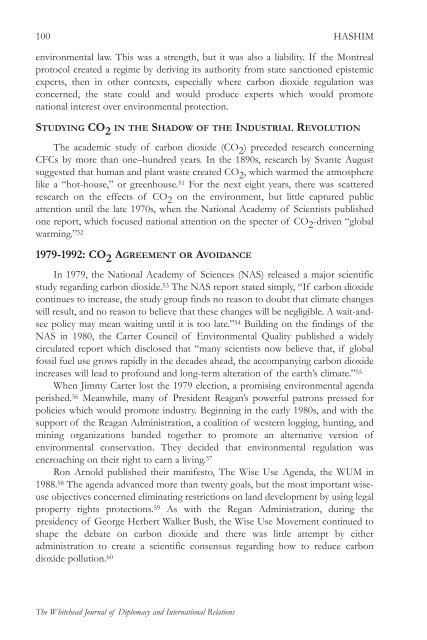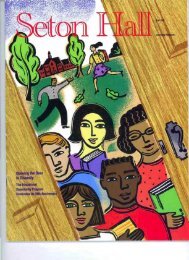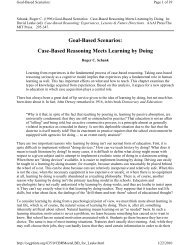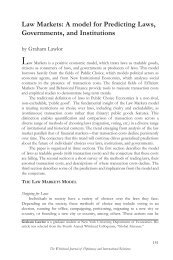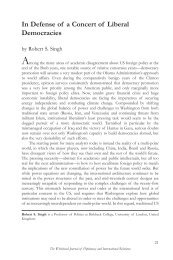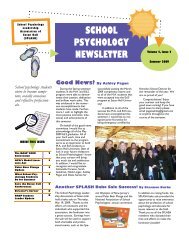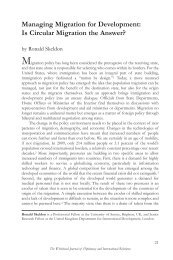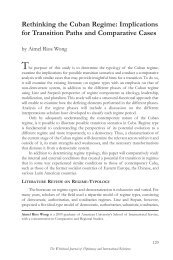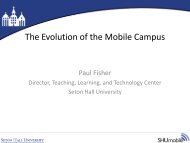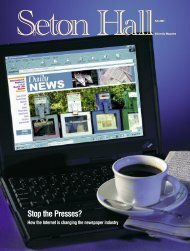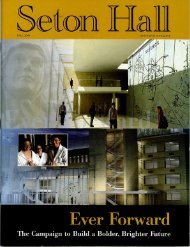Free Riders, Side Payments, and International Environmental ...
Free Riders, Side Payments, and International Environmental ...
Free Riders, Side Payments, and International Environmental ...
You also want an ePaper? Increase the reach of your titles
YUMPU automatically turns print PDFs into web optimized ePapers that Google loves.
100<br />
The Whitehead Journal of Diplomacy <strong>and</strong> <strong>International</strong> Relations<br />
HASHIM<br />
environmental law. This was a strength, but it was also a liability. If the Montreal<br />
protocol created a regime by deriving its authority from state sanctioned epistemic<br />
experts, then in other contexts, especially where carbon dioxide regulation was<br />
concerned, the state could <strong>and</strong> would produce experts which would promote<br />
national interest over environmental protection.<br />
STUDYING CO 2 IN THE SHADOW OF THE INDUSTRIAL REVOLUTION<br />
The academic study of carbon dioxide (CO 2 ) preceded research concerning<br />
CFCs by more than one–hundred years. In the 1890s, research by Svante August<br />
suggested that human <strong>and</strong> plant waste created CO 2 , which warmed the atmosphere<br />
like a “hot-house,” or greenhouse. 51 For the next eight years, there was scattered<br />
research on the effects of CO 2 on the environment, but little captured public<br />
attention until the late 1970s, when the National Academy of Scientists published<br />
one report, which focused national attention on the specter of CO 2 -driven “global<br />
warming.” 52<br />
1979-1992: CO 2 AGREEMENT OR AVOIDANCE<br />
In 1979, the National Academy of Sciences (NAS) released a major scientific<br />
study regarding carbon dioxide. 53 The NAS report stated simply, “If carbon dioxide<br />
continues to increase, the study group finds no reason to doubt that climate changes<br />
will result, <strong>and</strong> no reason to believe that these changes will be negligible. A wait-<strong>and</strong>see<br />
policy may mean waiting until it is too late.” 54 Building on the findings of the<br />
NAS in 1980, the Carter Council of <strong>Environmental</strong> Quality published a widely<br />
circulated report which disclosed that “many scientists now believe that, if global<br />
fossil fuel use grows rapidly in the decades ahead, the accompanying carbon dioxide<br />
increases will lead to profound <strong>and</strong> long-term alteration of the earth’s climate.” 55<br />
When Jimmy Carter lost the 1979 election, a promising environmental agenda<br />
perished. 56 Meanwhile, many of President Reagan’s powerful patrons pressed for<br />
policies which would promote industry. Beginning in the early 1980s, <strong>and</strong> with the<br />
support of the Reagan Administration, a coalition of western logging, hunting, <strong>and</strong><br />
mining organizations b<strong>and</strong>ed together to promote an alternative version of<br />
environmental conservation. They decided that environmental regulation was<br />
encroaching on their right to earn a living. 57<br />
Ron Arnold published their manifesto, The Wise Use Agenda, the WUM in<br />
1988. 58 The agenda advanced more than twenty goals, but the most important wiseuse<br />
objectives concerned eliminating restrictions on l<strong>and</strong> development by using legal<br />
property rights protections. 59 As with the Regan Administration, during the<br />
presidency of George Herbert Walker Bush, the Wise Use Movement continued to<br />
shape the debate on carbon dioxide <strong>and</strong> there was little attempt by either<br />
administration to create a scientific consensus regarding how to reduce carbon<br />
dioxide pollution. 60


